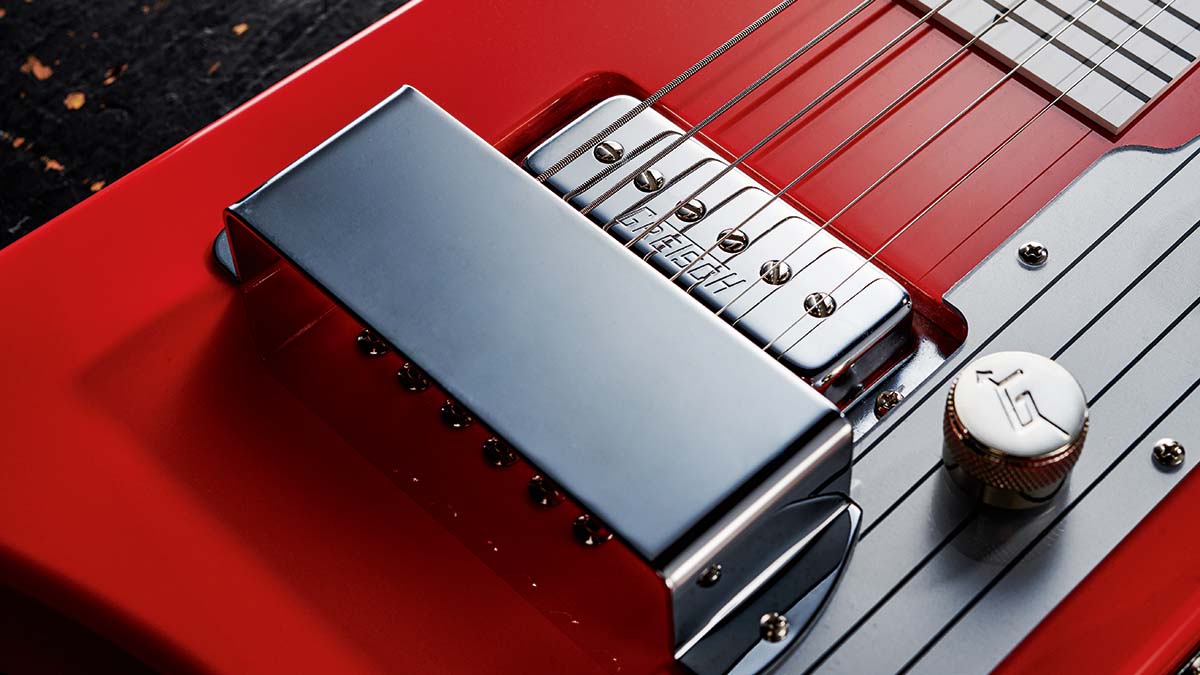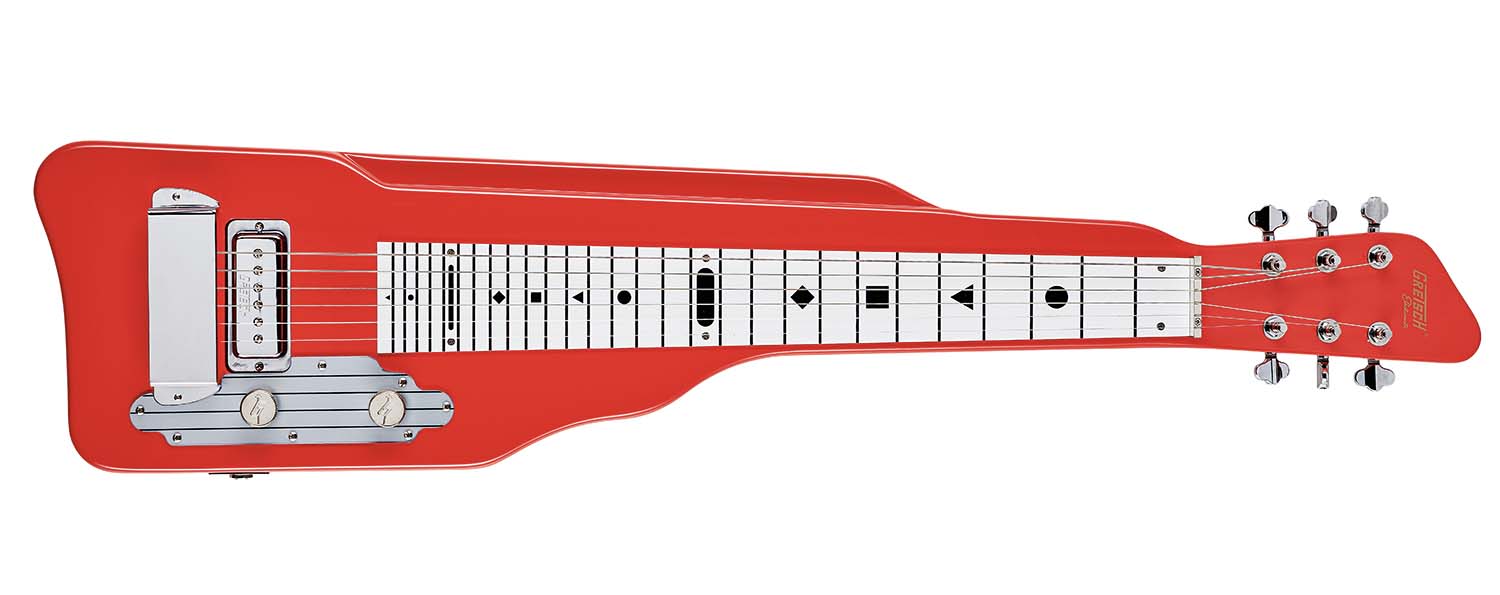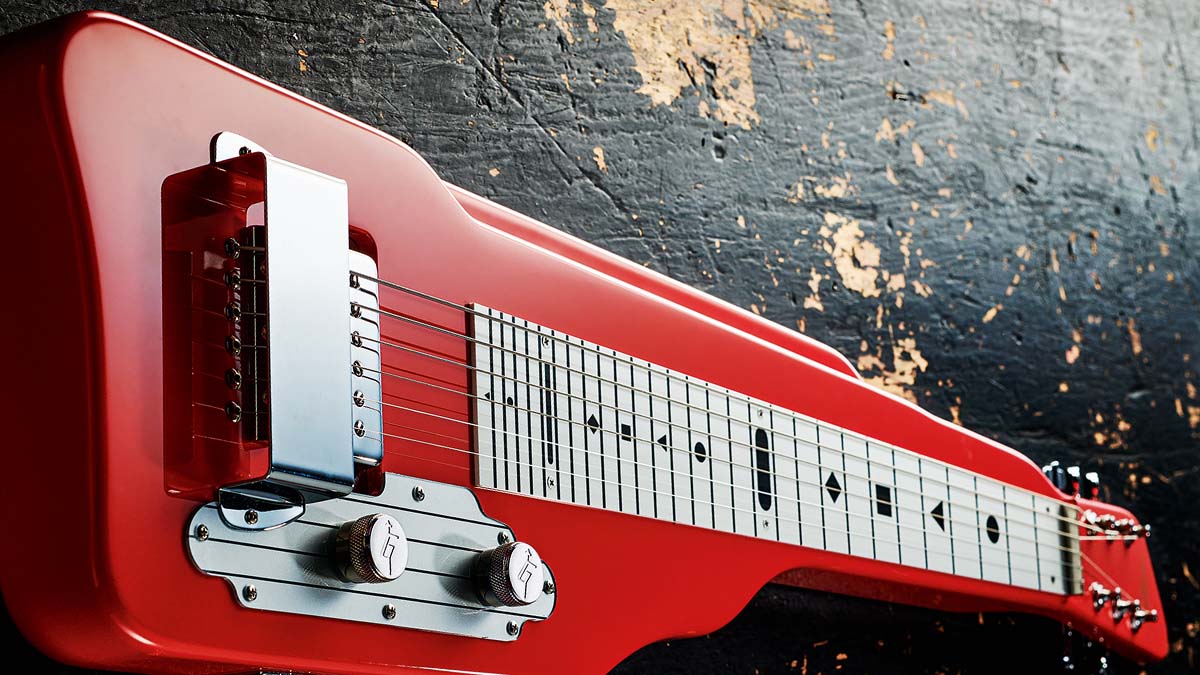Guitar World Verdict
It might be basic, but it captures a pretty throaty single-coil sound that suits pseudo pedal-steel cleans, especially with outboard compression and reverb, and a volume pedal to add the swells.
Pros
- +
Perfectly good retro-style lap steel.
- +
Voicing suits both clean and dirty slide styles.
Cons
- -
The string spacing is slightly cramped.
You can trust Guitar World
Back in the 1930s, the ‘electric Hawaiian’ guitar pretty much beat the ‘electric Spanish’ instrument to market. Post-war, the Spanish style began its ascendency and the lap steel became more niche.
It differs from the later pedal steel in numerous ways, not least that it doesn’t have any pedals. As its name suggests, it’s simply played on your lap (table or keyboard stand), and while console steels – one or more necks in different tunings with legs – had their day, the lap steel remains devilishly simple for today’s musician.
It can be tuned in numerous ways and used for clean country or Hawaiian styles, or played dirty through your pedalboard. You don’t need metal finger picks or a metal bar to voice the notes, either: any slide will do, as will standard pick and fingers. It’s a true punk of an electric guitar.
Gretsch’s G5700 (apparently based on the 1963 Electromatic Mainliner) has been in the catalogue for some years. This year, it’s refreshed in new colours and provides a solidbody option to the acoustic G9210 Boxcar and G9230 Bobtail square-neck resonators. Its classy, almost moulded-looking form recalls the Art Deco style of many original (quite collectable) lap steels.

The nut is quoted as aluminium but looks like a nickel-plated metal part, likewise the bridge, with the strings anchoring through the body. The metal coverplate over the bridge actually sits quite high – we removed it to carry out our sound test.
The ‘low noise’ single coil has a measured DCR of 5.42kohms and is in a neat logo’d chromed cover, the volume and tone controls under a plastic control plate with the usual Gretsch ‘arrow’ knobs.
The string spacing does seem cramped compared with our old UK-made Bennett lap steel, which has a string spread of 46mm at the nut and 55m at the bridge compared with the Gretsch’s 35mm/52.5mm spacing – more like a conventional electric.
The output jack is side mounted and feels a little loose. As shipped, the 0.012 to 0.052-gauge strings feel pretty slack when tuned to open G, particularly on the short 572mm (22.5-inch) scale. With raised tunings such as open A or E things will feel stiffer, but we’d definitely raise the gauge here.
It might be basic, but it captures a pretty throaty single-coil sound that suits pseudo pedal-steel cleans, especially with outboard compression and reverb, and a volume pedal to add the swells. Kick in some overdrive and a small amp, and it can sound really vicious. It’s a great asset for any recording musician, too – you don’t have to have your slide chops down to get some useful sounds.
Specs

- PRICE: $499/£495
- ORIGIN: China
- TYPE: Solidbody lap steel
- BODY & NECK: Mahogany
- SCALE LENGTH: 572mm (22.5”)
- NUT/STRING SPACING: Plated metal/35mm
- FINGERBOARD: Plastic with fret and position markers
- FRET MARKERS: 28
- HARDWARE: Strings-through metal bar bridge with cover, enclosed tuners
- STRING SPACING, BRIDGE: 52.5mm
- ELECTRICS: ‘Low noise’ single coil, master volume and tone
- WEIGHT (kg/lb): 2.49/5.478
- OPTIONS: None
- LEFT-HANDERS: No
- FINISH: Tahiti Red (as reviewed), Broadway Jade, Vintage White, Tobacco
- CONTACT: Gretsch

Dave Burrluck is one of the world’s most experienced guitar journalists, who started writing back in the '80s for International Musician and Recording World, co-founded The Guitar Magazine and has been the Gear Reviews Editor of Guitarist magazine for the past two decades. Along the way, Dave has been the sole author of The PRS Guitar Book and The Player's Guide to Guitar Maintenance as well as contributing to numerous other books on the electric guitar. Dave is an active gigging and recording musician and still finds time to make, repair and mod guitars, not least for Guitarist’s The Mod Squad.
“It holds its own purely as a playable guitar. It’s really cool for the traveling musician – you can bring it on a flight and it fits beneath the seat”: Why Steve Stevens put his name to a foldable guitar
“Finely tuned instruments with effortless playability and one of the best vibratos there is”: PRS Standard 24 Satin and S2 Standard 24 Satin review











